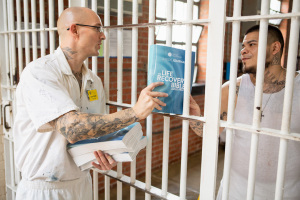Dealing with Menstrual Cramps Naturally
This article was brought to you by Truestar Health: The World's Most Comprehensive Nutrition, Fitness & Healthy Lifestyle Resource
Painful periods are one of the most common health problems that women experience.The cramps can occur without any physical cause or abnormality or they can be secondary to other illnesses such as endometriosis, pelvic inflammation, adhesion or ovarian cysts.
Excess meat, dairy and salt consumption can aggravate menstrual cramps. Sugar interferes with the absorption of some B vitamins and minerals. So, it is important to increase fish, fresh fruits and vegetables in the diet, while decreasing diary, salt, sugar and red meat.
According to Dr. Tori Hudson in her excellent book, Women’s Encyclopedia of
Natural Medicine, niacin has been shown in clinical research to be effective as a treatment in 87.5% of women with menstrual cramps. The dose used was 100 mg throughout the month and then every two to three hours during the periods of menstrual cramps.
One of the side effects of using niacin is bright, red flushing of the skin, which
although harmless, can be uncomfortable. Niacin can be taken with a meal
to decrease the flushing.
Adding 300 mg of vitamin C and 60 mg of rutin daily increased the effectiveness of niacin up to 90%.
Other important daily nutrients that should be taken to assist with menstrual cramps include vitamin E, wild salmon fish oil and evening of primrose oil.
Traditionally, two effective herbs known as cramp bark (viburnum opulus) and
black haw (viburnum prunifolium) have been used as uterine relaxants and general antispasmodics. When taking cramp bark tincture, the recommended dosage is half a teaspoon every two to three hours or one capsule every two to four hours. For black haw, the recommended dosage is one quarter teaspoon every two to four hours and one capsule every three to four hours.
In her new book, The Miracle of Magnesium, Dr. Carolyn Dean who conducted European studies with small groups of women who suffered painful periods, reported that the women experienced consistent relief of symptoms after taking high doses of magnesium. She suggests a dosage of 500mg of calcium and 300mg of magnesium, preventively. During a painful period, she suggests taking extra magnesium, up to 300 mg twice daily.
Magnesium is critical for muscle spasm. However, it is also a natural laxative and too much can cause diarrhea. Alternatively, you can also try homeopathic magnesium phosphate, 6 c or 30 c every half to one hour, during cramps. Hot castor oil packs are also effective in relieving menstrual cramps.
__________________________________________________
Did you like what you read? Click here to read more articles brought to you by Truestar Health: The World's Most Comprehensive Nutrition, Fitness & Healthy Lifestyle Resource>




























